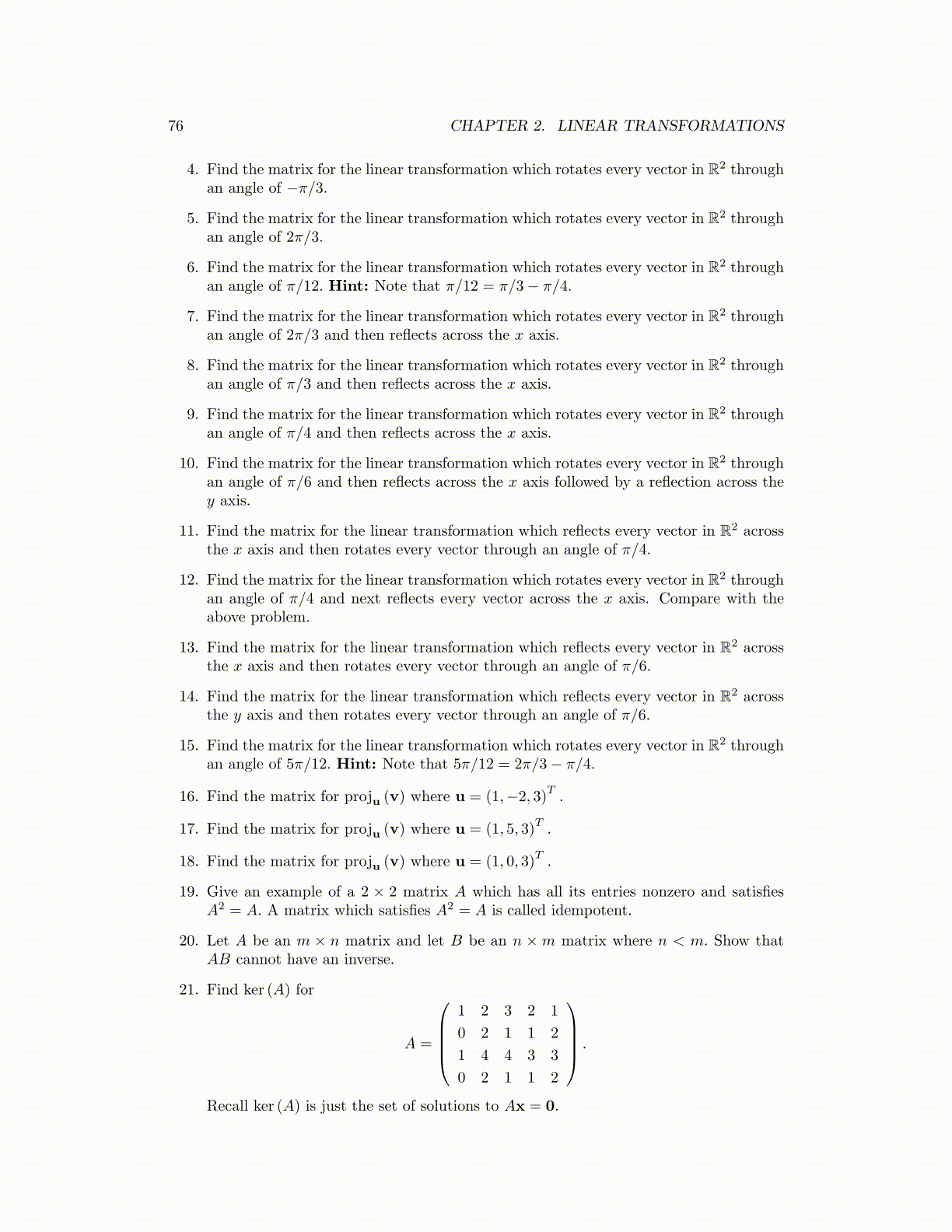
76 CHAPTER 2. LINEAR TRANSFORMATIONS
4. Find the matrix for the linear transformation which rotates every vector in R2 throughan angle of −π/3.
5. Find the matrix for the linear transformation which rotates every vector in R2 throughan angle of 2π/3.
6. Find the matrix for the linear transformation which rotates every vector in R2 throughan angle of π/12. Hint: Note that π/12 = π/3− π/4.
7. Find the matrix for the linear transformation which rotates every vector in R2 throughan angle of 2π/3 and then reflects across the x axis.
8. Find the matrix for the linear transformation which rotates every vector in R2 throughan angle of π/3 and then reflects across the x axis.
9. Find the matrix for the linear transformation which rotates every vector in R2 throughan angle of π/4 and then reflects across the x axis.
10. Find the matrix for the linear transformation which rotates every vector in R2 throughan angle of π/6 and then reflects across the x axis followed by a reflection across they axis.
11. Find the matrix for the linear transformation which reflects every vector in R2 acrossthe x axis and then rotates every vector through an angle of π/4.
12. Find the matrix for the linear transformation which rotates every vector in R2 throughan angle of π/4 and next reflects every vector across the x axis. Compare with theabove problem.
13. Find the matrix for the linear transformation which reflects every vector in R2 acrossthe x axis and then rotates every vector through an angle of π/6.
14. Find the matrix for the linear transformation which reflects every vector in R2 acrossthe y axis and then rotates every vector through an angle of π/6.
15. Find the matrix for the linear transformation which rotates every vector in R2 throughan angle of 5π/12. Hint: Note that 5π/12 = 2π/3− π/4.
16. Find the matrix for proju (v) where u = (1,−2, 3)T.
17. Find the matrix for proju (v) where u = (1, 5, 3)T.
18. Find the matrix for proju (v) where u = (1, 0, 3)T.
19. Give an example of a 2 × 2 matrix A which has all its entries nonzero and satisfiesA2 = A. A matrix which satisfies A2 = A is called idempotent.
20. Let A be an m × n matrix and let B be an n ×m matrix where n < m. Show thatAB cannot have an inverse.
21. Find ker (A) for
A =
1 2 3 2 1
0 2 1 1 2
1 4 4 3 3
0 2 1 1 2
.
Recall ker (A) is just the set of solutions to Ax = 0.